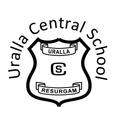NAPLAN & HSC Minimum Standards

NAPLAN
The National Assessment Program - Literacy and Numeracy (NAPLAN) was introduced in 2008 and has been administered by the Australian Curriculum, Assessment and Reporting Authority (ACARA) since 2010. It is a federal government initiative that is meant to provide a snapshot of a student's current reading, writing, language (spelling, grammar & punctuation) and numeracy skills. The tests occur annually and are sat by students in Years 3, 5, 7 and 9. Participation in the testing is and always has been at parent discretion.
From an educational point of view NAPLAN can provide valuable data about what might be working well or what might not be working well in a school. In this sense it can be a useful diagnostic tool; however, schools have many such tools that they also utilise. Educators have many concerns about NAPLAN and how it is used by different groups;
1. Often in the media NAPLAN can be used in overly simplistic ways to rank and or judge schools. This is problematic because schools do so much more than simply teach these skills.
2. The tests take a snapshot in time and therefore do not take into account external factors that may play into how a student participates e.g. several years ago we had a student who was having a tough time outside of school, in the writing test they wrote effectively one sentence and then walked out of the test because of their distress. The writing results for the student and the school were then dramatically effected in what would be perceived as a negative way. Two years later things had settled down for this student and in a better frame of mind they approached NAPLAN in a more positive fashion, needless to say the individual result and therefore the school result were dramatically affected in a positive way.
No one is defined by an examination result
All that said how did our school perform in 2019?
We could pick many things or pieces of information to illustrate our students performance the most basic would just be a raw score by way of comparison with other schools, state and or national average. If the purpose of NAPLAN though is to get a snapshot of a moment in time one of the best measures is to look at students growth over time and in this instance particularly since the last time a student participated in the NAPLAN tests. Ideally, what we would like to see is that as many students as possible are making positive growth in the respective domains.
| 2019 | Year 5 Positive growth (% of students) | Example of expected growth and actual |
| Reading | 97% | Expected 77.00; Actual 148.90 |
| Writing | 72% | Expected 74.40; Actual 166.40 |
| Spelling | 96% | Expected 67.50; Actual 105.40 |
| Grammar & Punctuation | 50% | Expected 80.80; Actual 142.30 |
| Numeracy | 94% | Expected 127.50; Actual 213.10 |
From any perspective one could see that based on these figures there is some work to do specifically in Writing and, Grammar and Punctuation. After students have sat the Year 3 tests projections are made from then on after each set of tests of what a students' expected growth should be; in the Reading example in the table above it was projected that the student would have expected growth of 77.00 points, they actually had 148.90 points of growth.
| 2019 | Year 7 Positive Growth (% of students) | Expected growth and actual |
| Reading | 70% | 66.80; 117.90 |
| Writing | 80% | 26.70; 131.30 |
| Spelling | 73% | 80.10; 157.60 |
| Grammar & Punctuation | 81% | 33.70; 155.90 |
| Numeracy | 89% | 32.60; 80.60 |
| 2019 | Year 9 Positive Growth (% of students) | Expected Growth and actual |
| Reading | 85% | 41.40; 131.60 |
| Writing | 88% | 71.10; 222.60 |
| Spelling | 85% | 28.70; 90.70 |
| Grammar & Punctuation | 69% | 59.80; 100.50 |
| Numeracy | 100% | 36.20; 93.50 |
Year 3
For obvious reasons growth scores don't exist for Year 3 but trends in Year 3 achievement are equally positive.
| Bottom 2 Bands | Middle 2 Bands | Top 2 Bands | |
| 2015 Reading | 42% | 36.8% | 21.1% |
| 2019 Reading | 12.5% | 50% | 37.5% |
| 2015 Writing | 10.5% | 68.4% | 21.1% |
| 2019 Writing | 7.1% | 50% | 42.9% |
| 2015 Numeracy | 47.4% | 47.4% | 5.3% |
| 2019 Numeracy | 6.3% | 81.3% | 12.5% |
A conclusion...
It is easy to argue that across the board positive things are happening in our school. As is said quite often, we don't say that we are perfect. What we do say is that we strive everyday to be better at what we do - all of us. We deliberately don't make a big fuss about NAPLAN - either the tests or the results because they are not a measure of what and who we want our students and our school to be. Every single one of our students is so much more than an isolated score on a test every couple of years.
We do make use of the diagnostic material to improve what we do and how we do it. We are always happy to discuss individual results if you wish - you just have to make appointment.
HSC Minimum Standards
Without going into too much detail the following is true.
1. The minimum standards relate to the following three domains of NAPLAN; Reading, Writing and Numeracy.
2. The minimum standards are meant to be met by the conclusion of formal schooling. That is at the completion of Year 12 (Academy II), although opportunities remain after that to sit online tests and do so.
3. You do not have to meet the standard in the Year 9 NAPLAN tests - although it makes life easy for everyone if you do.
4. The minimum standard in Band 8.
5. Technically, you don't need a HSC to go to university. You can get an ATAR without getting the HSC document.
6. An ATAR is not a score but a rank.
